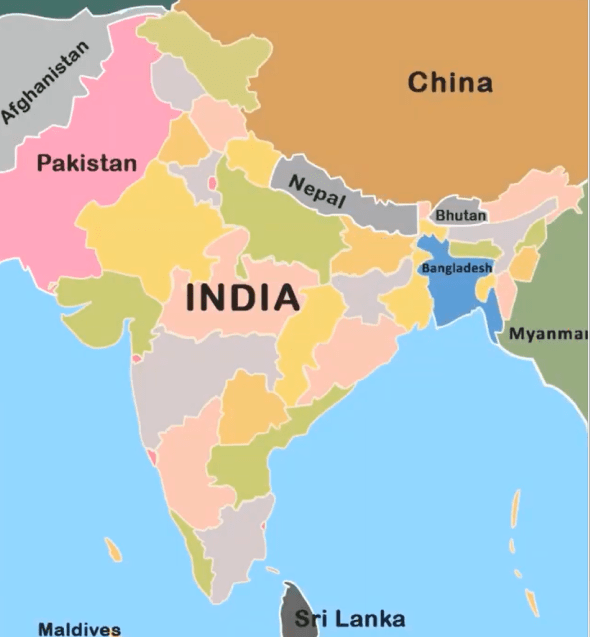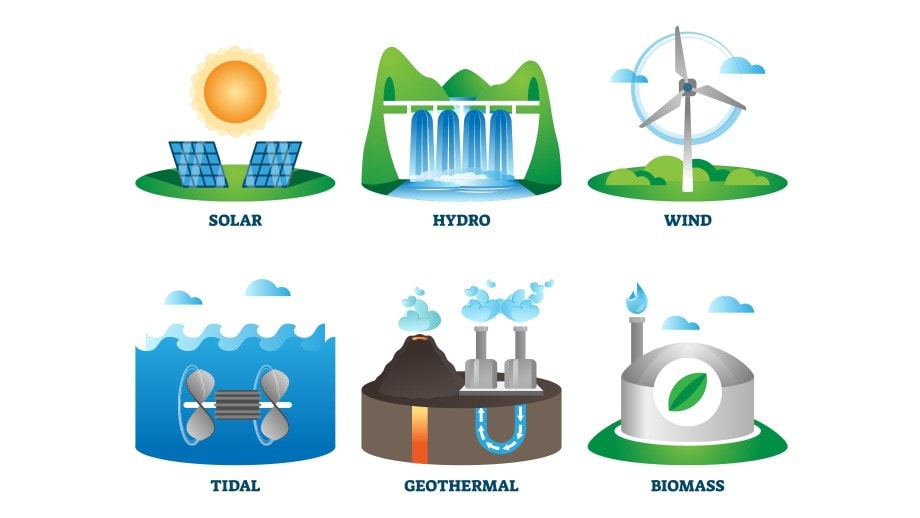Q1. Development of a country can generally be determined by:
(a) It's per capita income
(b) Its average literacy level
(c) Health status of its people
(d) All the above
Ans: (d) All of the above
Q2. Which of the following neighbouring countries has better performance in terms of human development than India? (a) Bangladesh
(a) Bangladesh
(b) Sri Lanka
(c) Nepal
(d) Pakistan
Ans: (b) Sri Lanka
Q3. Assume there are four families in a country. The average per capita income of these families is Rs 5000. If the income of three families is Rs 4000, Rs 7000 and Rs 3000 respectively, what is the income of the fourth family?
(a) Rs 7500
(b) Rs 3000
(c) Rs 2000
(d) Rs 6000
Ans: (d)
Solution:
Total income of three families = 5000 + 4000 + 3000 = 14000
Total income of four families = 5000 × 4 = 20000
Income of the fourth family = 20000 - 14000 = 6000
Q4. What is the main criterion used by the World Bank in classifying different countries? What are the limitations of this criterion, if any?
Ans: World Bank classifies different countries on the basis of the per capita income or the average income of a person in the country. It is calculated by dividing the total income of the country by the population of the country.
The limitations of the criterion are:
- It does not give any information about the distribution of the average income among the people in a country.
- Two countries with the same per capita income might be very different with regard to income distribution. One country might have equitable distribution of income while the other country might have great disparities between the rich and the poor.
- It ignores important factors like literacy rate, infant mortality rate, healthcare, etc. which play a crucial role in the development of a country.
Q5. In what respects is the criterion used by the UNDP for measuring development different from the one used by the World Bank?
Ans:
UNDP
- It takes education, health, and per capita income as the base.
- Countries are ranked.
- It is also considered a broader concept of development.
World Bank
- It uses per capita income as its base for comparison.
- Under this concept, countries have been divided into three categories - rich, middle, and poor.
- It is considered a narrow concept of development.
Q6. Why do we use averages? Are there any limitations to their use? Illustrate with your own examples related to development.
Ans: We use averages because different countries have different populations, so calculating the average helps in getting an estimated answer which can be used to compare different things at different levels.
There are limitations of calculating averages because this does not give any information about the distribution of a thing between people.
Example: If we calculate the per capita income of two countries A and B with 5 people each, the salary of five people in country A is Rs.23,000, Rs.22,000, Rs.23,500, Rs.28,000 and Rs.25,000 and the income of people living in country B are Rs.1,50,000, Rs. 22,000, Rs.50,000, Rs.4000, Rs.2500.
The average income of country A will be Rs.24,300, and that of country B will be Rs.45,700. This proves that the average of country B is higher than that of country A, and yet there is a disparity in the income distribution of country B and the income is evenly distributed in country A.
Q7. Kerala, with a lower per capita income, has a better human development ranking than Punjab. Hence, per capita income is not a useful criterion at all and should not be used to compare states. Do you agree? Discuss.
Ans: Yes, Per capita income is not a useful criterion and should not be used to compare states for the reasons mentioned below:
(a) The literacy rate, infant mortality rate, healthcare facilities, etc. are better in Kerala in comparison to Haryana.
(b) The per capita income is only calculated by calculating the average income of the people of the state, irrespective of any other factor.
(c) Similarly in some states, the Public Distribution System functions well and the health and nutritional status of people of such states are certainly likely to be better.
(d) Money cannot buy all the goods and services that you need to live well. Income by itself is not a completely adequate indicator of material goods and services.
(e) The better Human Development Index of Kerala is due to adequate basic health and educational facilities. More average income doesn't mean all people have access to basic facilities. There can be a huge disparity in the distribution of income because of which Punjab has a lower ranking in Human Development.
Q8. Find out the present sources of energy that are used by the people in India. What could be the other possibilities fifty years from now?
Ans: The present sources of energy used by the people in India are coal, petroleum, natural gas, crude oil, firewood, etc. These are conventional sources of energy. They are limited in nature and if overused they can become exhausted.

People have started using non-conventional sources of energy. Fifty years from now there is a possibility that people will be making more use of non-conventional sources of energy like tidal energy, solar energy, wind energy, etc. This is because the current usage of sources of energy may result in the loss of these resources for future generations.
Q9. Why is the issue of sustainability important for development?
Ans: Sustainable development is a development that meets the needs of the present without compromising the ability of future generations to meet their own needs.
The issue of sustainability is important for development because if the natural resources are not used carefully, they may not be available for future generations. The depleting resources of a country may ultimately result in a lack of development of the country.
Q10. "The Earth has enough resources to meet the needs of all but not enough to satisfy the greed of even one person". How is this statement relevant to the discussion of development? Discuss.
Ans: The statement, “The Earth has enough resources to meet the needs of all but not enough to satisfy the greed of even one person” is completely relevant in terms of the development of a country because both resources and development go hand in hand.
For the sustainability of development, the maintenance of resources is very crucial. All the natural resources are non-renewable and will exhaust if not used cautiously.
Therefore, it is the responsibility of the people to use them only to meet their needs and not to satisfy their greed. If natural resources are not used wisely now, future generations may not be able to use them to meet their needs that will ultimately result in the downfall of the development of a country.
Q11. List a few examples of environmental degradation that you may have observed around you.
Ans: Some of the examples of environmental degradation in the area are as follows:

- Air pollution has increased due to the emission of smoke from factories and vehicles.
- There is an increase in water pollution due to shops and small factories in the residential areas.
- There is noise pollution due to the use of loudspeakers at night and the blowing of horns unnecessarily on the roads by different vehicles.
- People throw garbage wherever they want. Perhaps there is no provision for dustbins in the streets or roadsides.
- Sometimes people urinate in the open on the roadside due to a lack of public conveniences.

Ans:
Q13. The following table shows the proportion of adults (aged 15-49 years) whose BMI is below normal (BMI <18.5 kg/m2) in India. It is based on a survey of various states for the year 2015-16. Look at the table and answer the following questions.
(i) Compare the nutritional level of people in Kerala and Madhya Pradesh.
(ii) Can you guess why around one-fifth of people in the country are undernourished even though it is argued that there is enough food in the country? Describe in your own words.
Ans: (i) The undernourished adults in Kerala are males 8.5% and females 10% only whereas in Madhya Pradesh, it is 28% males and 28% females. It is, thus clear that the number of undernourished adults in Madhya Pradesh is higher than in Kerala.
(ii) One-fifth of the population in the country are undernourished even though it is argued that there is enough food in the country because of the following reasons:
- The disparity in the distribution of food grains by the Public Distribution System (PDS).
- Nutritious food cannot be afforded by the poor population in the country.
- Educational backwardness of people results in unemployment because of which people cannot afford the basic necessity of food.
- There is no proper distribution of ration at the fixed price stores.

No comments:
Post a Comment